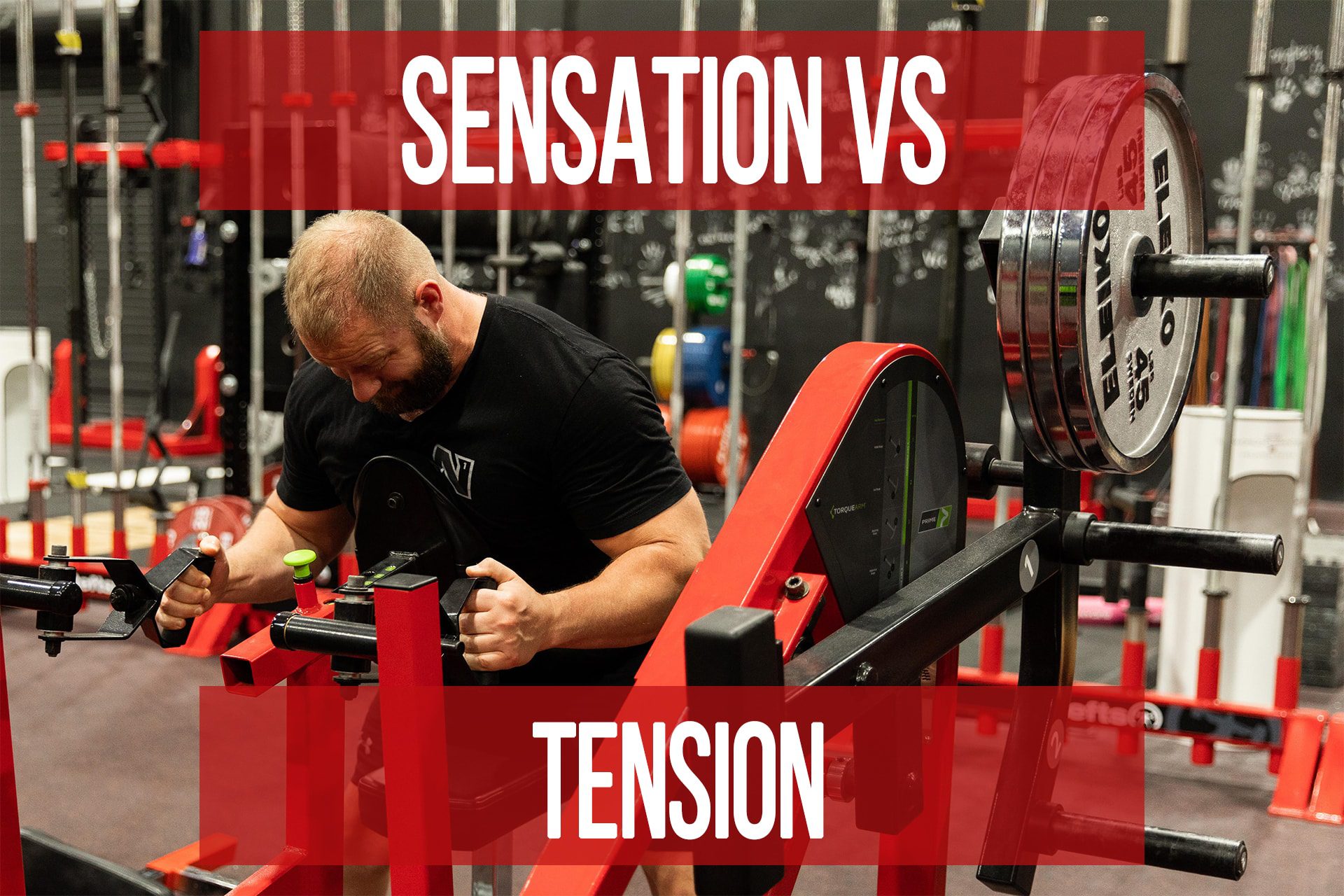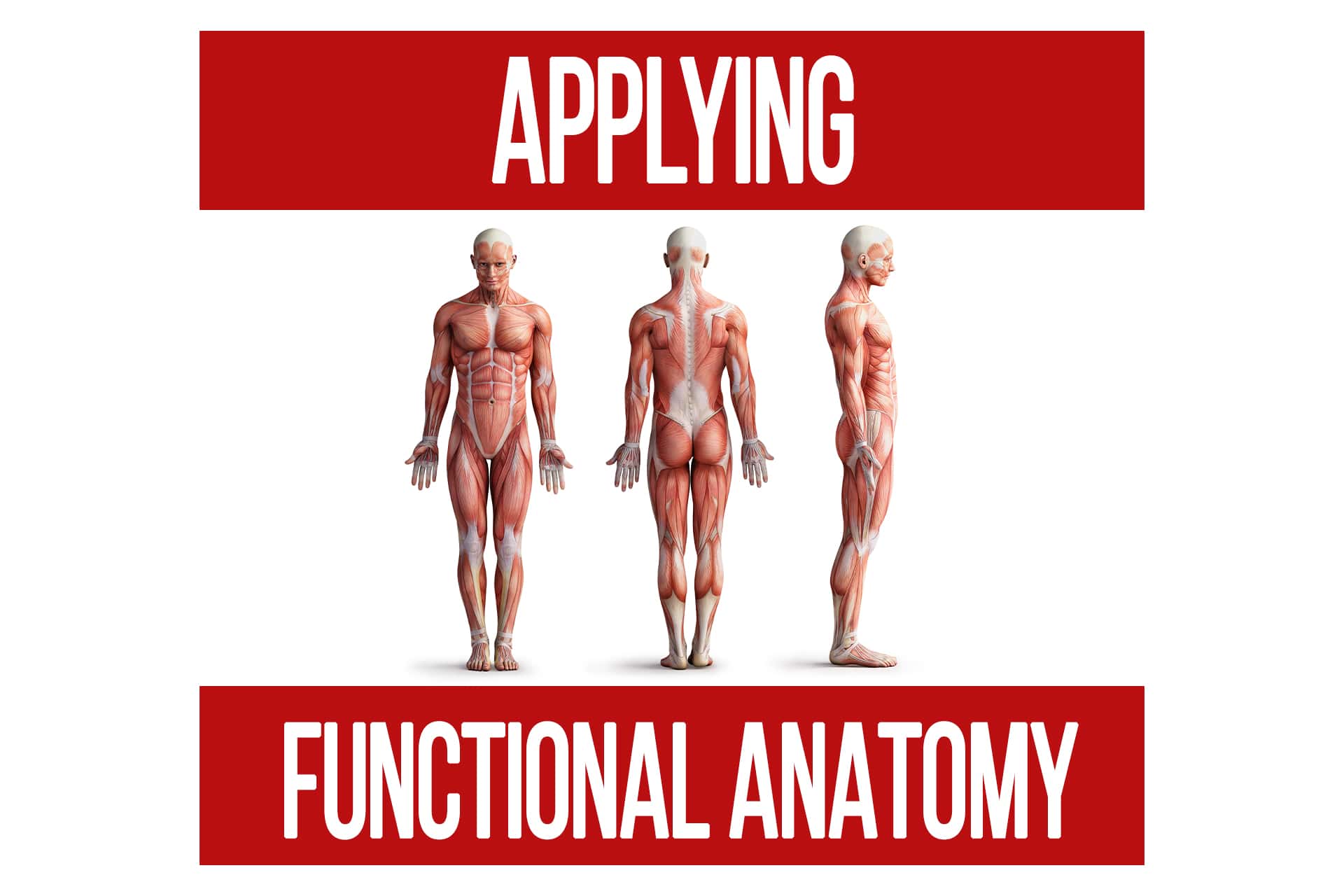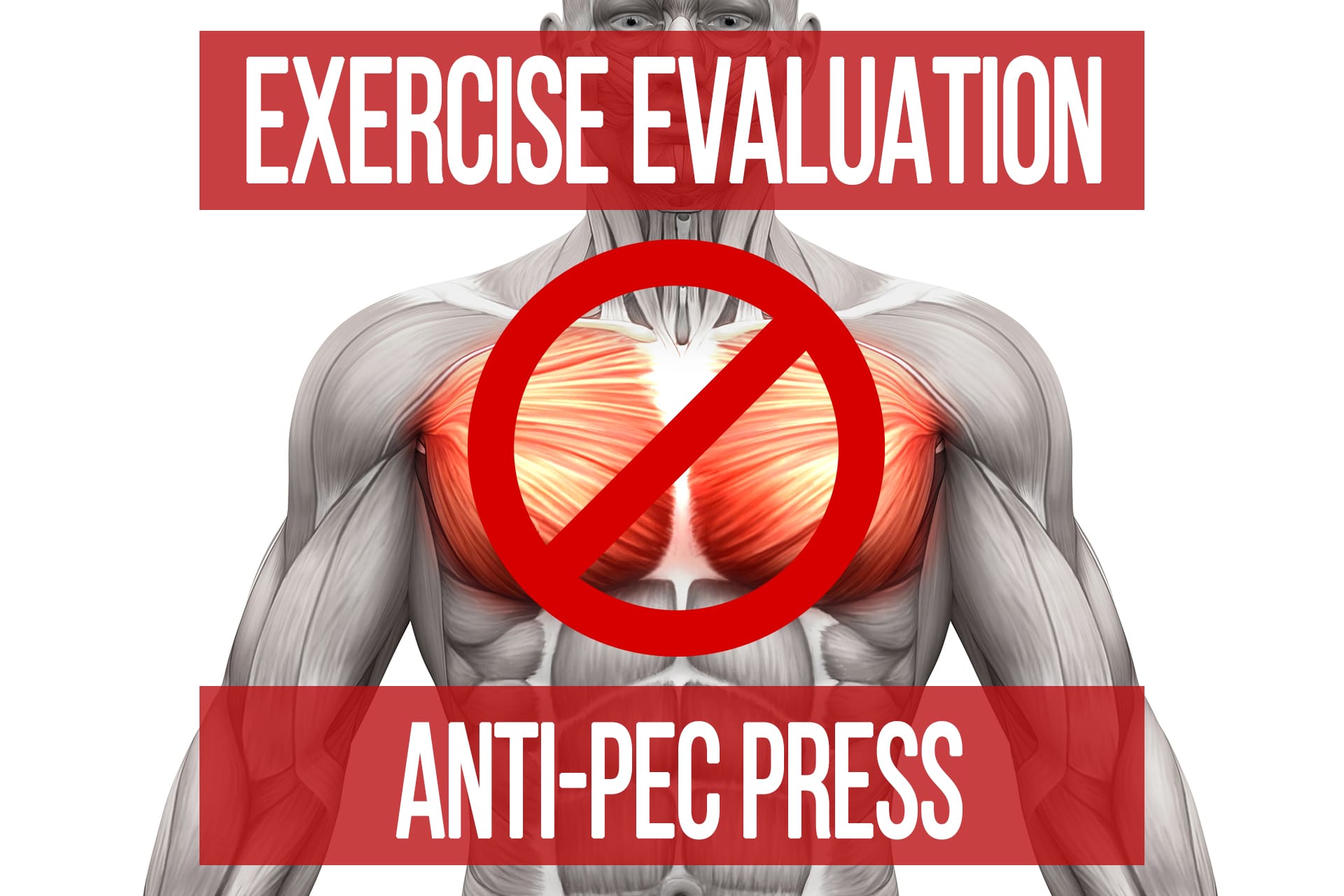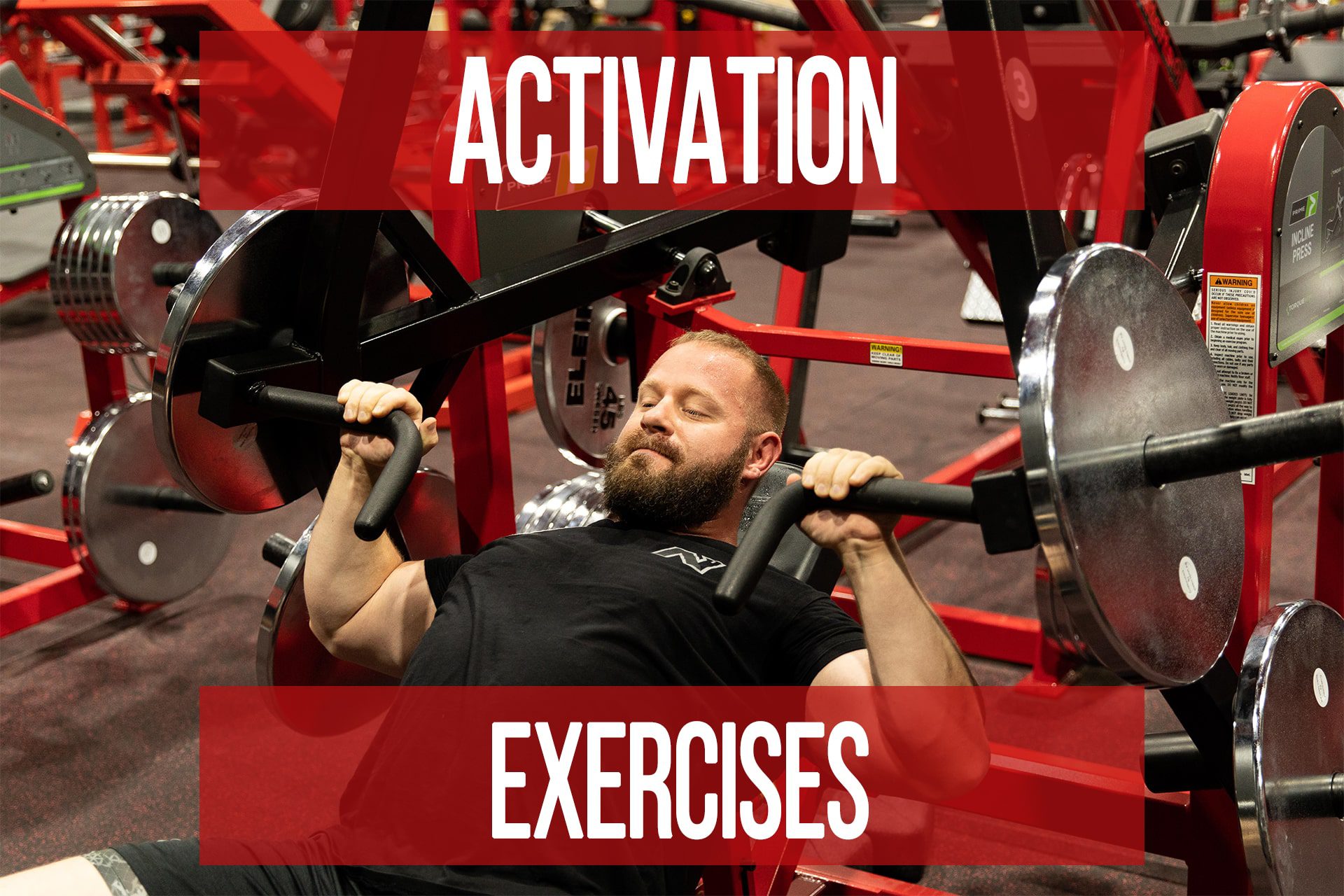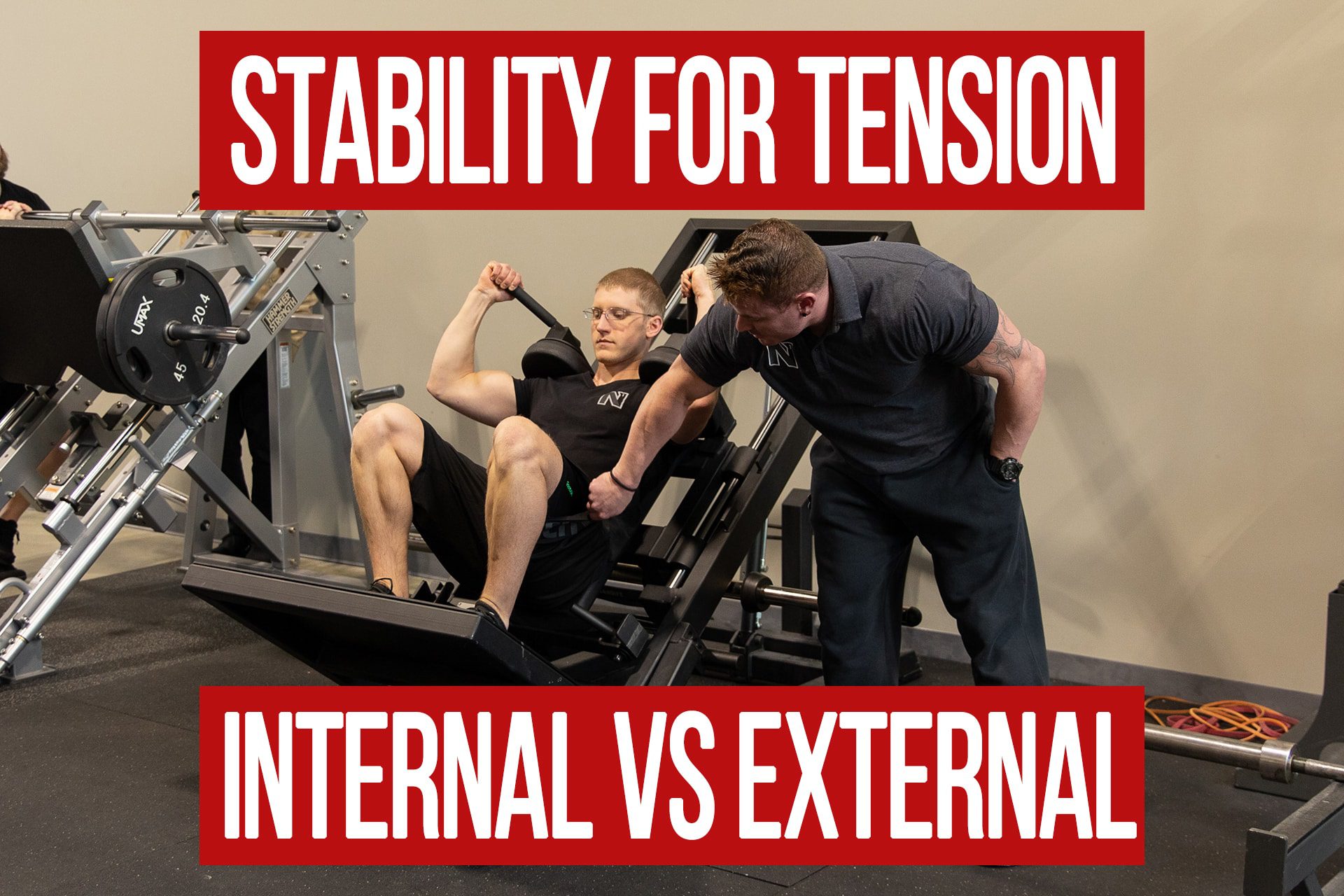Worst Exercises for Fitness Goals
n1 training
These are some of the worst exercises to use for any fitness-related goal. This is not going to cover the poor execution of other exercises that can be just as detrimental. It will purely focus on exercises that even when done “correctly” (I use that term loosely) are either not beneficial for goals of aesthetics and performance, or are detrimental to your joint health and movement patterns just by doing them.
Frog Pumps
Have you ever really just wanted to wrench on your sacrum, stress the hell out of your piriformis, and get little to no tension in your glutes? Then look no further than the frog pump!
The frog pump violates the mechanics of the hip joint. The movement puts the femur into excessive external rotation while attempting to go through maximal hip extension which jams the joint in a position we’re not meant to create force in.
This position also disadvantages the glute max and severely limits the amount of tension it is able to produce. The main muscles that are being stressed are those around the sacrum (a little bone at the base of your spine that connects to the pelvis).
If your goal is to train your glutes, this is not only ineffective, but can lead to low back pain due to the stress on the piriformis and sacrum.
If you want to train the glutes in the shortened position a glute bridge is a 1,000x better option. Your glutes are in a much better position to create tension (necessary for hypertrophy and growing those glutes) and you can actually add load in a stable position.
Lying Cable Lateral Raise
If you want to add stability to a cable lateral raise for your medial delts, avoid this common mistake:
Do not lie on your back on a bench when trying to do a lateral raise movement. It inhibits the natural movement of the scapula to rotate as your humerus adducts and abducts which will limit your ability to produce tension/force
You may “feel” it more in your shoulder, but this is the nervous system firing excessively due to the INSTABILITY at the shoulder due to the restricted scapular movement.
For a demonstration video where we measure the DECREASE in force output of this exercise compared to a regular lateral raise, watch Sensation VS Tension.
Instead, you can use an incline bench as a chest support for a cable lateral raise. It will not restrict your range of motion and will actually add stability against the load.
Zercher Anything
The limiting factor on this exercise becomes your tolerance to pain with a barbell smashing your elbow flexors, rather than your quads’ and glutes’ ability to work.
If you have longer upper arms, shorter torso, and/or great mobility you might also be limited by the bar or your arms running in to your legs.
One of the main reasons this is an inefficient exercise is that you may also be limited by fatigue in your upper back musculature. Hopefully your legs can handle more load than your upper back.
For more range of motion at the knees and hips while still using sufficient load to build some tissue without unnecessarily abusing your elbow flexors, try using a heel elevation with your barbell back squat instead.
Jefferson Squats
For building your legs, the Jefferson squat is not your best option.
Here is why:
- It is loading your spine while twisted.
- It is also difficult to stabilize the pelvis properly in this position, limiting potential output from the glutes or quads.
- It can be outside your active range if you have poor mobility and limb lengths to be pulling from the floor
- It can be very range-restricted if you have shorter arms and a longer torso (guys, you know why)
Unilateral exercises certainly have their place, but also should accommodate a setup that allows more favorable biomechanics for stability and safety. For example, walking lunges, step ups, and split squat variations.
Guillotine Press (Upper arm perpendicular to torso)
This will not optimally build your chest. In fact, it’s not even that great for your shoulder health.
The guillotine press does not effectively line up your arm path with the direction the fibers of pecs pull. Even when targeting the clavicular (upper) division of the pecs, the upper arm should be slightly adducted and travels towards the center of the clavicle.
This press variation places most of the tension on the anterior delts (although it doesn’t line that tissue up very well either). The bottom position of this movement can also create impingement in the shoulder depending on a person’s individual joint structure and ability to internally rotate.
If you want to build your chest, stick to more effective exercises with proper setup. Your shoulders (and gains) will be much better off for it.
Sumo Deadlift
There is only one purpose for using a sumo stance. Move as much weight as possible with as little muscular work as possible. It’s not a “bad” exercise per se, but completely inefficient if your goal is building muscle, losing body fat, or improving muscular strength.
This is why it is sometimes used in the sport of powerlifting, where moving load through an arbitrary range of motion is the only goal. However, in that case the only reason to do a sumo stance deadlift is to practice the skill of the movement. If you want to get stronger at the sumo deadlift, the most efficient way is not doing the sumo deadlift. It would be utilizing other exercises, like a conventional deadlift, leg press, RDL, even leg extension to strengthen the muscle tissue that contributes to the movement itself.
When it comes to aesthetic goals, such as muscle gain or fat loss, this exercise is a complete waste of time. The neurological demand far outweighs the muscular work being done. More muscular work is the goal of hypertrophy or fat loss training. The purpose of the training is more tension or metabolic stress within the target muscle tissue (depending on the goal of the workout). Don’t choose an exercise that minimizes muscular tension and maximizes load on your joints.
This is not going to cover the poor execution of other exercises that can be just as detrimental. It will purely focus on exercises that even when done “correctly” are either not beneficial for goals of aesthetics and performance, or are detrimental to your joint health and movement patterns just by doing them.
Frog Pumps
If you’d really like to train a small muscle called the piriformis in an awkward looking position and get little to no significant tension in your glutes, look no further than the frog pump!
The frog pump attempts to violate the mechanics of the hip joint. The movement puts the femur into excessive external rotation while attempting to go through maximal hip extension which jams the joint in a position we’re not meant to create force in.
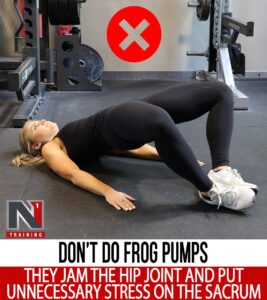
This position also disadvantages the glute max and severely limits the amount of tension it is able to produce. The main muscles that are being put under tension are those around the sacrum (a little bone at the base of your spine that connects to the pelvis).
If your goal is to train your glutes, this is not only ineffective, but can lead to low back pain due to the stress on the piriformis and sacrum with repeated use.
If you want to train the glutes in a more shortened position, a glute bridge is a 1,000x better option. Your glutes are in a much better position to create tension, which is necessary for hypertrophy and growing those glutes, and you can actually add load in a stable position. Just don’t keep adding resistance in the form of thigh bands, but that is a whole other post.
Lying Cable Lateral Raise
If you want to add stability to a cable lateral raise for your middle delts, avoid this common mistake:
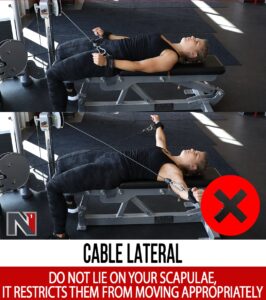
Do not lie on your back on a bench when trying to do a lateral raise movement. It inhibits the natural movement of the scapula to rotate as your humerus adducts and abducts which will limit your ability to produce tension/force
You may “feel” it more in your shoulder, but this is the nervous system firing excessively due to the INSTABILITY at the shoulder due to the restricted scapular movement.
For a demonstration video where we measure the DECREASE in force output of this exercise compared to a regular lateral raise, watch Sensation VS Tension.
Instead, you can use an incline bench as a chest support for a cable lateral raise. It will not restrict your range of motion and will actually add stability against the load.
Zercher Anything
The limiting factor on this exercise becomes your tolerance to pain with a barbell smashing your elbow flexors, rather than your quads’ and glutes’ ability to work.
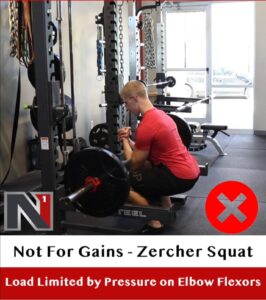
If you have longer upper arms, shorter torso, and/or great mobility you might also be limited by the bar or your arms running in to your legs.
One of the main reasons this is an inefficient exercise is that you may also be limited by fatigue in your upper back musculature. Hopefully your legs can handle more load than your upper back.
For more range of motion at the knees and hips while still using sufficient load to build some tissue without unnecessarily abusing your elbow flexors, try using a heel elevation with your barbell back squat instead.
Jefferson Squats
For building your legs, the Jefferson squat is not your best option.
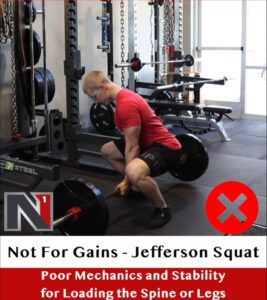
Here is why:
- It is loading your spine while twisted and or putting both a rotational and flexion force on the spine.
- It is also difficult to stabilize the pelvis properly in this position, limiting potential output from the glutes or quads.
- It can be outside your active range if you have poor mobility and limb lengths to be pulling from the floor
- It can be very range-restricted if you have shorter arms and a longer torso (guys, you know why)
Unilateral exercises certainly have their place, but also should accommodate a setup that allows more favorable biomechanics for stability and safety. For example, walking lunges, step ups, and split squat variations.
Guillotine Press (Upper arm perpendicular to torso)
This will not optimally build your chest. In fact, it’s not even that great for your shoulder health.
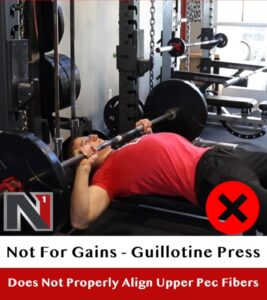
The guillotine press does not effectively line up your arm path with the mechanics of the fibers of pecs. Even when targeting the clavicular (upper) division of the pecs, the upper arm should be much more adducted and travels towards the center of the clavicle.
This press variation places most of the tension on the anterior delts (although a little more adducted would still be better). The bottom position of this movement can also create impingement in the shoulder depending on a person’s individual joint structure and ability to internally rotate.
If you want to build your chest, stick to more effective exercises with proper setup. Your shoulders (and gains) will be much better off for it.
Sumo Deadlift
There is only one purpose for using a sumo stance. Move as much weight as possible with as little muscular work as possible. It’s not a “bad” exercise per se, but completely inefficient if your goal is building muscle, losing body fat, or improving muscular strength.
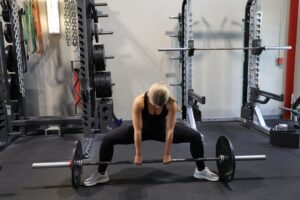
This is why it is sometimes used in the sport of powerlifting, where moving load through an arbitrary range of motion is the only goal. However, in that case the only reason to do a sumo stance deadlift is to practice the skill of the movement. If you want to get stronger at the sumo deadlift, the most efficient way is not doing the sumo deadlift. It would be utilizing other exercises, like a conventional deadlift, leg press, RDL, even leg extension to strengthen the muscle tissue that contributes to the movement itself.
To be clear, the sumo stance is not the same thing as a wide stance deadlift.
When it comes to aesthetic goals, such as muscle gain or fat loss, this exercise is a complete waste of time. The neurological demand far outweighs the muscular work being done. More muscular work is the goal of hypertrophy or fat loss training. The purpose of the training is more tension or metabolic stress within the target muscle tissue (depending on the goal of the workout). Don’t choose an exercise that minimizes muscular tension and maximizes load on your joints.
Have a Question on This Content?
Please Log In to Submit Your Question
Anti-Pec Press Exercise Evaluation
videoAnatomy & Biomechanics Biomechanics Execution and Technique Hypertrophy TrainingThe Importance of Stability for Muscular Tension: Internal vs External
articleBiomechanics Definition Foundation FREE
Popular Pages
Learn & Train With Us
Add N1 Training to your Homescreen!

Please log in to access the menu.
